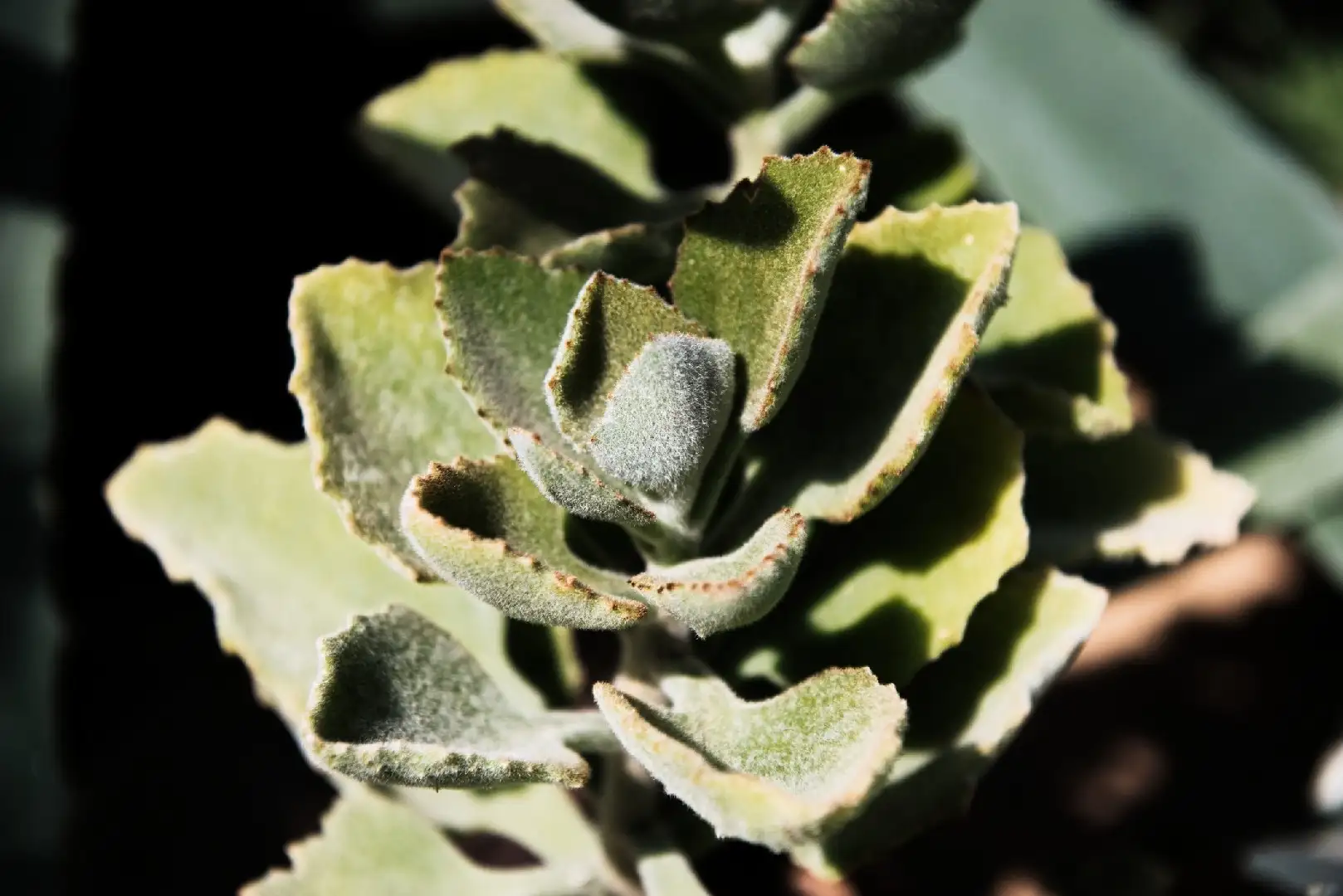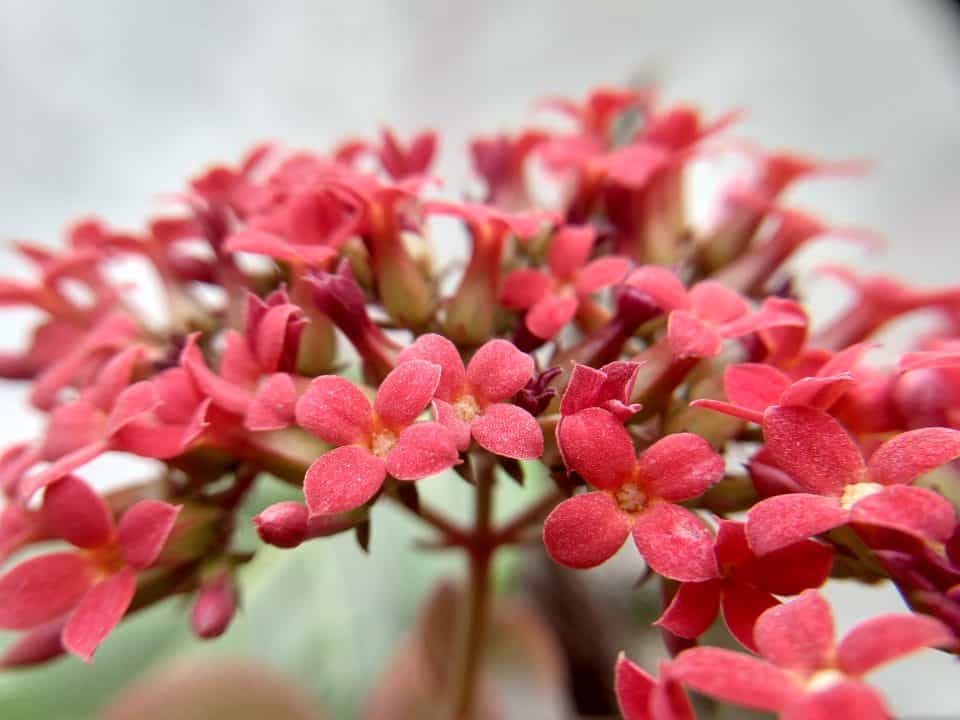Kalanchoe thyrsiflora, also called paddle plant or flapjack plant, is a succulent, flowering houseplant that grows as tall as three feet and produces yellow, red, or orange flowers from October to November.
Because it’s drought tolerant and easy to maintain, it’s an ideal plant for beginning gardeners looking to add color and texture to their indoor spaces without too much effort on their part.
The paddle plant is a popular flowering succulent that can be used as an indoor or outdoor houseplant or in containers on your patio, deck, or porch. It comes in several color varieties including red and yellow, with broad leaves attached to thick stems that look like paddles.
This succulent has been in cultivation since 1787 when the first Kalanchoe thyrsiflora was sent from Madagascar to Europe by French botanist Charles Plumier.
Kalanchoe thyrsiflora is a succulent houseplant that can be grown outdoors in warmer climates. It has fleshy leaves on long stalks with brightly colored flowers on top, which are followed by red fruits that look like tiny hearts during the fall and winter months. Although they are decorative plants, paddle plants have few needs when it comes to caring.
Origin and distribution
Kalanchoe thyrsiflora is a species of Kalanchoe native to Madagascar. It is also known as the paddle plant, flapjack plant, or desert cabbage. The plant grows in dry, rocky areas and is often found in crevices. The leaves are thick and fleshy, and the flowers are borne on short stalks.
They will have been left unharmed by frost because they have large amounts of water stored within them that act as insulation against cold temperatures. You can either grow this type from seed or purchase it from your local nursery. If you want to start with seeds, sow them about 2 inches deep into rich soil once the threat of frost has passed.
Water well and keep evenly moist but not wet for best results. Kalanchoe need lots of sun so place them in a sunny location outdoors where they will receive at least 6 hours per day of direct sunlight if possible.
Kalanchoe thyrsiflora propagation

Kalanchoe thyrsiflora can be propagated by seed, stem cuttings, or leaf cuttings. To propagate by seed, sow the seeds in a well-draining cactus mix and water regularly. To propagate by stem cuttings, take a cutting from a healthy plant and allow the cutting to callous for a few days before potting it in a well-draining cactus mix.
If you are propagating by leaf cuttings, place the leaves in water so that they will produce roots. Once rooted, transplant them into a well-draining cactus mix. These plants grow best with bright light. When watering, make sure to thoroughly soak the soil until it is completely saturated then wait until it has dried out before watering again.
The paddle plant should not be fertilized during its dormancy period of winter months (November through February). It needs dry air but shouldn’t stay dry for too long. It also likes room temperature between 50-75 degrees Fahrenheit.
Kalanchoe thyrsiflora care information

Kalanchoe thyrsiflora, or paddle plant, is a beautiful succulent that’s easy to care for. These plants are relatively drought-tolerant and can tolerate short periods of neglect.
Light requirement
Kalanchoe thyrsiflora thrives in bright, indirect sunlight but can also tolerate lower light levels. If the light is too low, the leaves will become etiolated (stretched out and thin). The ideal location for Kalanchoe thyrsiflora is a spot that receives morning sun and afternoon shade.
The plant does not like being moved around often so make sure to choose a good location before planting it.
Soil/potting mix
Kalanchoe thyrsiflora grows best in a well-draining potting mix. A cactus or succulent potting mix will work well, or you can make your own by mixing equal parts sand, perlite, and peat moss. The key is to make sure the mix is light and airy so that it doesn’t hold onto too much water. Too wet soil will cause the plant’s roots to rot.
Watering
The Kalanchoe thyrsiflora, or paddle plant, is a succulent that is native to Madagascar. These plants are adapted to survive in arid conditions and can store water in their leaves.
As such, they do not require frequent watering. In fact, overwatering can be detrimental to the plant as it can lead to root rot. Allow the soil to dry out completely before watering again. When you do water, give the plant a good soaking so that water runs through the drainage holes.
Fertilizer
Fertilize your Kalanchoe thyrsiflora every two weeks during the growing season with a balanced, water-soluble fertilizer. Be sure to dilute the fertilizer to half-strength before applying it to your plant. During the winter months, you can reduce fertilization to once a month.
If you notice that your plant is starting to look pale or yellow, it may be getting too much sun and you should move it to a shadier spot. The leaves will start to curl up and get brown spots if they are exposed to cold temperatures for too long.
Temperature
The ideal temperature for Kalanchoe thyrsiflora is between 65-75 degrees Fahrenheit. However, it can tolerate temperatures as low as 50 degrees Fahrenheit. If the temperature gets too hot, the leaves will start to turn brown and wilt. Too much cold will cause the leaves to turn black and drop off. These plants need a lot of light but not direct sunlight.
Humidity
The Kalanchoe thyrsiflora does best in humid environments. If the air in your home is too dry, consider getting a humidifier. You can also increase the humidity around your plant by grouping it with other plants, or by placing it on a pebble tray filled with water. Be sure to change the water often, as stagnant water can lead to root rot. misting your plant regularly will also help to keep it healthy and happy.
The ideal humidity range is between 40-70%. When checking for high levels of humidity, use a hygrometer or wet-and-dry thermometer; both are available at most garden centers.
If you’re using a wet-and-dry thermometer, leave it next to the plant overnight; if the bulb feels wet when you touch it in the morning, you know that your humidity level is between 50% and 70%. A hygrometer will show these readings more accurately.
Pruning
The best time to prune your Kalanchoe thyrsiflora is in the spring, after the last frost. You’ll want to remove any dead or dying leaves, as well as any that are damaged or diseased. If the plant is looking leggy, you can also trim back the stems to encourage new growth.
When pruning, be sure to use clean, sharp shears to avoid damaging the plant. Avoid over-pruning at once; instead, wait until summer and then prune again if necessary. Your Kalanchoe should bloom twice a year – in the winter and again in the summertime – with blossoms lasting from three weeks to two months each time.
When to repot
You’ll know it’s time to repot your kalanchoe thyrsiflora when the plant becomes pot-bound, meaning the roots have filled up the pot and there’s no room for them to grow. This usually happens every one to two years.
Be sure to use a well-draining potting mix and a pot that’s only slightly larger than the current one. Kalanchoes are susceptible to root rot, so it’s important not to overwater them.
Dormancy/Winter rest

Kalanchoe thyrsiflora is a succulent that originates from Madagascar. It is a member of the Crassulaceae family and is closely related to the jade plant. Kalanchoes are known for their ability to store water in their leaves, which makes them very drought-tolerant. This plant will go dormant in the winter, so don’t be alarmed if it starts to lose some of its leaves.
When watering, soak thoroughly until water comes out the bottom of the pot. Allow soil to dry before watering again. If this plant needs more light than what you have in your home or office environment, try moving it closer to a window or adding artificial light.
The paddle plant prefers warm temperatures around 65-75 degrees Fahrenheit during dormancy and cooler temperatures when they become active again in springtime, around 55-65 degrees Fahrenheit–so keep this in mind when you’re deciding where to place your new friend!
Kalanchoe thyrsiflora flower & fragrance
The Kalanchoe thyrsiflora, or paddle plant, is a beautiful succulent that produces flowers in shades of yellow, orange, and red.
The flowers are very fragrant and attract bees and butterflies.
Growth rate
Kalanchoe thyrsiflora is a slow-growing succulent that can reach up to two feet tall. It has thick, fleshy leaves that are arranged in a rosette pattern and can be green, red, or purple in color. The plant produces small, yellow flowers that bloom in the spring.
Toxicity
Kalanchoe thyrsiflora is a toxic plant and can cause vomiting, diarrhea, and other gastrointestinal issues if ingested. The plant is also poisonous to pets, so keep it out of reach of children and animals. If you suspect your child or pet has ingested this plant, call your local poison control center immediately.
USDA hardiness zones
Kalanchoe thyrsiflora thrives in USDA hardiness zones 10-11, but can be grown indoors or outdoors year-round in other zones. If this succulent becomes too dry, the leaves will curl up and brown. Keep it away from hot or cold drafts as they could damage the leaves.
Pests and diseases
Kalanchoe thyrsiflora is generally a trouble-free plant, but it can be susceptible to mealybugs and aphids. If you see these pests on your plant, treat them with insecticidal soap or neem oil.
Kalanchoe thyrsiflora is also susceptible to root rot, so make sure the plant is not sitting in water.
If you see brown or yellow leaves, this is a sign of too much sun. Move the plant to a shadier spot. The plant can also develop a condition called ‘flop,’ which causes the plant’s leaves to droop. To fix this problem, cut off any affected branches.






